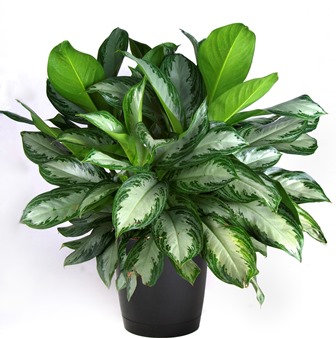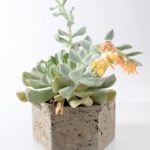Chinese Evergreen Decorates Your Indoors
If you’re looking for a low-light indoor plant that fits just about any décor, take a close look at Chinese evergreen (Aglaonema sp.). This versatile, slow-growing houseplant thrives in all but very bright light
Chinese evergreen has narrow oval leaves on short stems that come in a variety of leaf colors and patterns, although you most commonly see a variegated variety featuring eye-catching silver leaves edged in green. Whatever Aglaonema you include in your indoor garden, it’s sure to light up your interior.
Besides adding a decorative touch to your home, Chinese evergreen is also a powerhouse when it comes to cleaning your indoor air. The plant is among the top 50 in B.C. Wolverton’s list of houseplants that purify the air. The researcher for NASA found that the plant absorbs a variety of toxic substances.
Chinese evergreen has one drawback. The variety A. crispum produces bright red berries that are toxic. If you see flowers or berries appear, snip them off with scissors and dispose of them.

(Photo, Costa Farms, Plants of Steel Collection)
To have luck growing Chinese evergreen, keep the following cultivation tips in mind.
Lighting. Provide low to medium light. Avoid placing Chinese evergreen in very bright light, as the leaves may scorch.
Watering. Chinese evergreen prefers to remain moist, but not soggy. Water when the first ½- to 1-inch of soil has dried.
Fertilizing. Feed Chinese evergreen monthly with a well-balanced, organic fertilizer. Also top-dress the plant every six months with a ½-inch layer of worm compost, which will enrich the soil and give the plant necessary micronutrients.
Temperature. Chinese evergreen is susceptible to damage in cold temperatures and drafty conditions. They prefer 65 to 70 degrees. Avoid keeping them in a room that is 60 degrees or lower.
Humidity. Provide Chinese evergreen with 50 to 60 percent humidity. This can be achieved by misting them several times a day or placing them on humidity trays. Grouping plants also helps to raise the moisture level in the air.
Pests. Chinese evergreen may fall victim to mealybugs. If this occurs, check growing conditions, as plants susceptible to pest invasion are generally being grown in less than ideal conditions. Destroy mealybugs by spraying them with isopropyl alcohol and rinsing them off once the alcohol dries.





